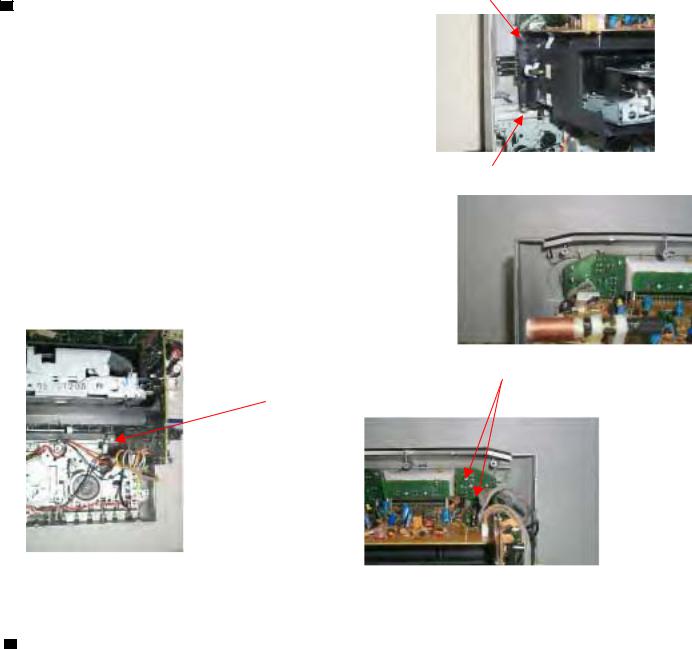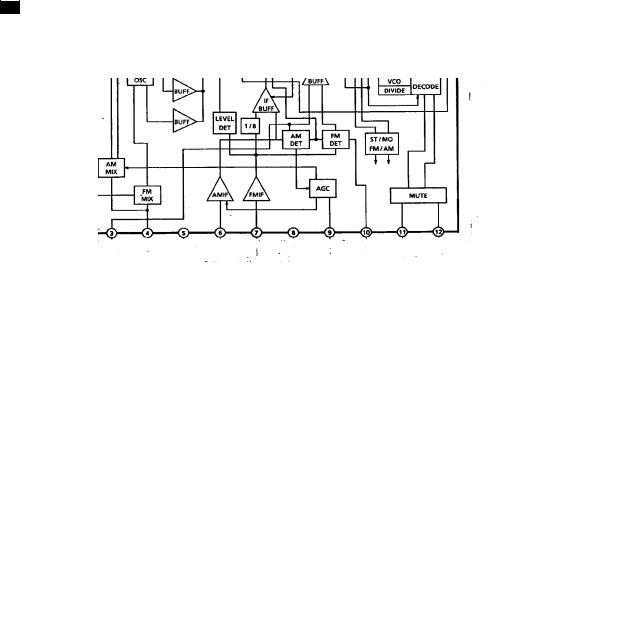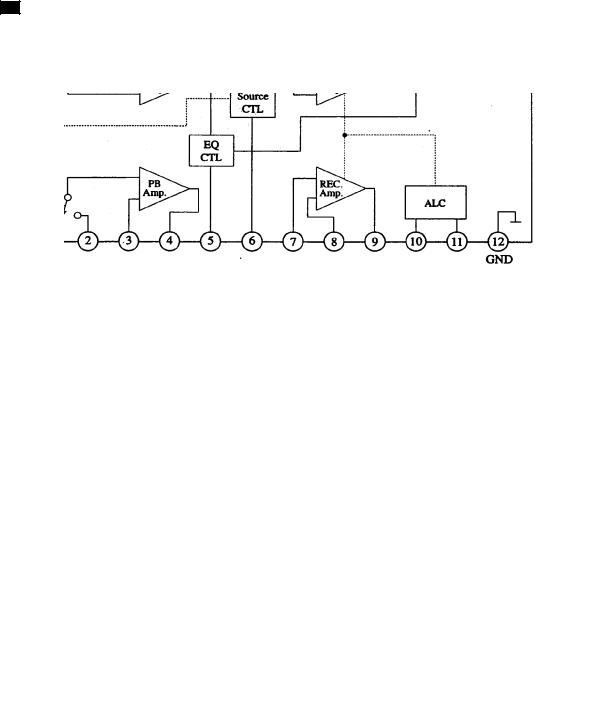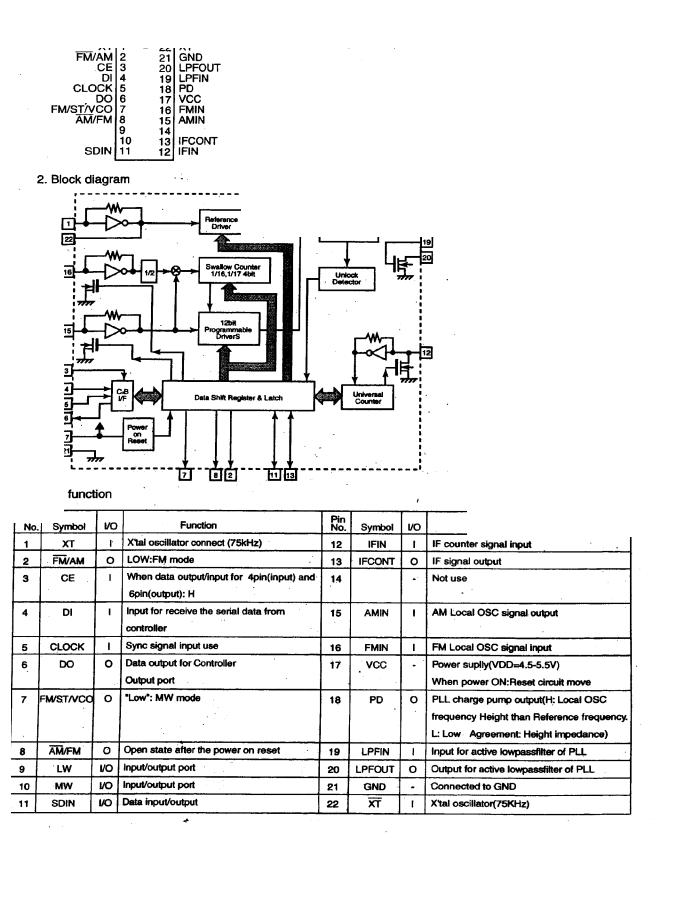Jvc PC-XC350 Service Manual

PC-XC350
SERVICE MANUAL
CD PORTABLE COMPONEMT SYSTEM
PC-XC350
Unit No. |
Unit No. |
Unit No. |
SP-PCXC350 |
SP-PCXC350 |
SP-PCXC350 |
contents |
|
Safety precaution ------------------ |
1-2 |
Disassembly method -------------- |
1-4 |
Adjustment method ---------------- |
1-6 |
TOC read ---------------------------- |
1-11 |
Major IC Description --------------- |
1-12 |
|
Area Suffix |
J----- |
USA |
C----- |
CANADA |
|
|
Block/Wiring Diagram ----------------- |
1-16 |
Circuit Diagram ------------------------- |
1-18 |
PCB drawing ---------------------------- |
1-20 |
Assembly -------------------------------- |
1-22 |
Packing ----------------------------------- |
1-32 |
No. xxxxx
COPYRIGHT © 2001 VICTOR COMPANY OF JAPAN,LTD (By JCA)
OCT 2001

PC-XC350
Safety Precautions
1.This design of this product contains special hardware and many circuits and components specially for safety purposes. For continued protection, no changes should be made ti the original design unless authorised in writing by the manufacturer. Replacement parts must be identical to those used in the original circuits. Services should be performed by qualified personel only.
2.Alterations of the design or circuitry of the product should not be made. Any design alterations of the product should not be made. Any design alterations or additions will void the manufacturer's warranty and will further relieve the manufacturer of responsibility for personal injury or property damage resulting therefrom.
3.Many eletrical and mechanical parts in the products have special safety-related characteristics. These characteristics are often not evident from visual inspection nor can the protection afforded by
them necessarily be obtain by using replaement components rated for higher voltage, the Parts
List of Service manual. Electrical components having such features ate identified by the shading on the schematics and by ( ) on the parts List in the Service Manual. The use of a substitute
repalcement which does not have the same safety characteristics as the recommended replacement parts shown in the Parts List of Service manual may create shock, fire, or other hazards.
4.The leads in the products are routed and dressed with ties, clamps, tubing's, barriers and the like to be separated from live parts, high temperatures parts, moving parts and/or sharp edges for the prevention of electric shcok and fire hazard. When service is required, the original leat routing and dress should be observed, and it should be confirmed that they have been returned to normal, after re-assembling.
5.Leakage current check (Electrical Shock hazard testing)
After re-assembling the product, always perform an isolation check on the exposed metap Parts of the product (antenna terminals, knobs, metal cabinet, screw heads, headphone jack, control shafts, etc.) to be sure the product is safe to operate without danger of electrical shock.
Do not use a line isloation transformer during this check.
Plug the AC line cord directly into the AC outlet. Using a "Leakage Current Tester", measure the leakage current from each ecposed metal parts of the cabinet, particularly and exposed metal part having a return path to the chassis, to a known good earth ground. Any leakage current must not exceed 0.5mA AC (r.m.s.)
Alternate check method
Plug the AC line cord directly into the AC outlet. Use an AC voltmeter having, 1,000 ohms per volt or more sensitvity in the following manner. Connect a 1,500 ohm 10W resistor paralleled by a 0.15uF AC-type capacitor between an exposed
metal part and a known good earth ground. Measure the AC voltage across the resistor with the AC voltmeter.
Move the resistor connection to each exposed metal part, particularly and exposed metal part having a return path to te chassis and
measure the AC voltage across the resistor. Now, reverse the plug in the AC outlet and repeat
each measurement. Voltage measured Any must not exceed 0.75 V AC (r.m.s.). This corresponds to 0.5 mA AC (r.m.s.).
Warning
1.This equipment has been designed and manufactured to meet international safety standards.
2.It is the legal responsibility of the repairer to ensure that these safety standards are maintained.
3.repairs must be made in accordance with the relevant safety standards.
4.It is essential that safety critical components are replaced by approved parts.
5.It mains voltage selector is provided, check setting for local voltage.
CAUTION Burrs formed during moulding may be left over on some parts of the chassis. Therefore, pay attention to such burrs in the case of performing repair of this system.
1 - 2

PC-XC350
Preventing static electricity
Electrostatic discharge (ESD), which occurs when static electricity stored in the body, fabric, etc. is discharged, can destroy the laser diode in the traverse unit (optical pcikup). Take care to prevent this when performing repairs.
1.1. Grounding to prevent damage by static electricity
Static electricity in the work area can destroy the optical pickup (laser diode) in devicessuch as DVD players. Be careful to use proper grounding in the area where repairs are being performed.
1.1.1. Gound the workbench
1. Ground the workbench by laying conductive material (such as a conductive sheet) or an iron plate over it before placing the traverse unit (optical pickup) on it.
1.1.2. Ground yourself
1. Use an anti-static wrist starp to release and static electricity built up in your body.
1.1.3. Handling the optical pcikup
1.In order to maintain quality during transport and before installation, both sides of the laser diode on the replacement optical pickup are storted. After replacement, return the shorted parts to their original condition. (Refer to the text.)
2.Do not use a tester to check the condition of the laserdiode in the optical pickup. The tester's internal power source can easily destory the laser diode.
1.2. Handling the traverse unit (optical pickup)
1.Do not subject the traverse unit (optical pcikup) to strong shocks, as it is a sensitive, complex unit.
2.Cut off the shorted part of the flexible cable using nippers, etc. after replacing the optical pickup. For specific details, refer to the replacement procdeure in the text. Remove the anti-static pin when replacing the traverse unit. Be careful not to take too long a time when attaching itto the connector.
3.Handle the flexible cable carefully as it may break when subjected to strong force.
4.It is not possible to adjust the semi-fixed resistor that adjusts the laser power. Do not return it.
1 - 3

PC-XC350
Disaeesmbly method
Removing the rear panel
1.From behind the body, remove the eight screws A retaining the rear panel.
2.Then remove the two screws B retaining the rear panel.
3.Take out the rear panel from the body.
Note:
Be careful of the FM antenna white wire, it is connection with the tuner PCB up side. You can directly take out from the tuner PCB.
When you re-assembly the product, plug the FM antenna white wire into the Tuner PCB's "FM ANT" position.
Screw A.
 Screw A.
Screw A.
Screw B.
1 - 4

PC-XC350
E
Removing the CD mechanism
1.Remove the rear panel
2.Removing the two screws E retaing the 3CD mechanism cover.
3.Removing the crew F retaing the control PCB
left side. |
|
|
E |
4.Remove the srews G retaing on the 3CD mechanism cover
&the two screws H retaining on the control PCB
F 
G
H
Removing the Main PCB
1.Remove rear panel
2.Remove the 3CD mechanism
3.Remove the four screws attaching the main PCB.
1 - 5

PC-XC350
Adjustment method
Measurement instruments required for adjustment
1.Low frequency oscillator
This oscillator should have a capacity to output 0dB to 600 at an oscillation frequency of 50Hz-20KHz
2.Electronic voltmeter
3.Distorion meter
4.Frequency counter
5.Wow & flutter meter
6.Test tape
TCC-112: tape speed and running unevenness (3KHz) TCC-140: Reference level (1KHz)
TCC-182A: Head angle (8KHz), playback frequency characteristics (1KHz) and dubbing frequency charateristics (125Hz and 8KHz)
7.Black tape
TYPE I : TDK-D60
8.Torque gauge : For play and tension FWD(CT-120m), and FF/REW(CT-F)
Measurement conditions |
|
|
Power supply voltage---------- |
AC 120V (60Hz) |
|
Reference output---------- |
Speaker : 0.866V/3 |
|
|
Headphone : 0.245V/32 |
|
Reference frequency and ----- |
1KHz, AUX : 450mV |
|
input level |
|
|
Input for confirming recording and-----CD : -10dB |
||
playback characteristics |
|
|
Measurement output terminal----- |
Speaker CN301 |
|
*Load resistance---------------------- |
|
3 |
Radio Input signal |
|
|
AM frequency ---------------- |
400Hz |
|
AM modulation----------------- |
30% |
|
FM frequency ----------------- |
1 KHz |
|
FM frequency deviation -------- |
|
22.5KHz |
Tuner section |
|
|
|
Voltage applied to tuner ----- |
+B:DC 5.7V |
||
VT: FM 2~5v / am 1.5~7.5v |
|||
Reference measurement ----- |
26.1mV(0.866/3 |
||
output |
|
|
|
Input positions ----- |
AM : Standard loop antenna |
||
FM : TP1 (hot) and TP2 (GND) |
|||
Standard measurement position of volumett |
|||
Bass ---------------------- |
Off |
|
|
EQ ----------------------- |
Flat |
|
|
UP and down adjustment of volume ----- |
Vol : 16 |
||
Precautions for measurement
1.Direct connect to the IF sweeper output side and 1 UF and 22 Kohm connect to the sweeper input side. Same as FIG. 1.
2.The IF sweeper output level should be made as low as possible within the adjusttable range.
3.Since the IF sweeper is a fixed device, there is no need to adjust this sweeper.
4.Since a ceramic oscillator is used, there is no need to perform and MIX adjustment.
5.Since a fixed coil is used, there is no need to adjust the FM tracking.
6.The input and output earth systems are separated. In case of simuitaneously measuring the voltage in both of the input and output systems with an electronic voltmeter for two channels, therefore, the earth should be connected particularly carefully.
7.In the case of BTLconnection amp., the minus terminal of speaker is not for earthing. Therefore, be sure not to connect any other earth terminal to this terminal. This system is of an BTL system.
8.For connecting a dummy resistor when measuring the output, use the wire with a greater code sze.
9.Whenever any mixed tape is used, use the band pass filter (DV-12V)
1 - 6

PC-XC350
TUNER ADJUSTMENT
use a plastic screews driver for adjustments.
Adjust the intermediate frequency of AM and FM to the frequency of cermic filter.
Supply voltage: |
DC 12.0V |
Speaker impedance: |
3 OHMS |
Function switch: |
RADIO |
a. |
AM adjustment |
|
BAND SELECT SWITCH : AM |
|
|
|
|
|
|
|
|||
|
|
|
|
|
|
|
|
|
|
|
|
|
|
ste |
Adjusting |
|
Tuning |
Input Connection |
|
Output Connection |
Adjustment |
|
VTVM Oscilloscope |
||||
|
|
|
|
|
|
|
|
|
|
|
|
|
|
|
circuit |
|
Frequency |
Measurement |
input |
|
Measurement |
output |
parts |
|
|
|
|
|
|
|
|
|
|
|
|
|
|
|
|
|
|
1 |
IF |
|
1000 KHz |
AM Sweep |
Loop |
|
VTVM |
TP16 (H) |
T103 |
|
|
|
|
|
(450 KHz) |
|
|
Generator |
ANT |
|
Oscilloscope |
TP 8 (E) |
|
|
|
|
|
|
|
|
|
|
|
|
|
|
|
|
|
|
|
|
|
|
|
|
|
|
|
|
|
|
|
|
|
2 |
Tuning |
|
530 KHz |
|
|
|
Digital |
TP16 (H) |
T102 |
|
1.2+/-0.05V |
||
|
|
|
|
|
|
|
|
|
|
|
Confirm 7.0+/-0.5V |
||
3 |
Coverage |
|
1710 KHz |
|
|
|
Voltmeter |
TP 8 (E) |
|
|
|||
|
|
|
|
|
|
|
|
|
|
|
|
|
|
4 |
Tracking |
|
600 KHz |
Am signal |
Loop |
|
VTVM |
TP12 (L) |
MW COIL |
|
|
|
|
|
|
|
|
|
|
|
|
|
|
|
Maximum |
||
5 |
|
|
1500 KHz |
Generator |
ANT |
|
Oscilloscope |
TP11 (R) |
CT102 |
|
|||
|
|
|
|
|
|
|
|
|
|
|
|
|
|
b. |
FM Adjustment |
|
BAND SELECT SWITCH : FM |
FM Dummy Antenna : 75 ohm unbalance |
|
|
|
||||||
|
|
|
|
|
|
|
|
|
|
||||
ste |
Adjusting |
|
Tuning |
Input Connection |
|
Output Connection |
Adjustment |
|
VTVM Oscilloscope |
||||
|
|
|
|
|
|
|
|
|
|
|
|
|
|
|
circuit |
|
Frequency |
Measurement |
input |
|
Measurement |
output |
parts |
|
|
|
|
|
|
|
|
|
|
|
|
|
|
|
|
|
|
1 |
IF |
|
|
FM Sweep |
TP4 (H) |
|
VTVM |
TP16 (H) |
|
|
|
|
|
|
|
|
|
|
|
|
|
||||||
|
(10.7 MHz) |
|
98.0 MHz |
Generator |
TP8 (E) |
|
Oscilloscope |
TP8(E) |
T104 |
|
|
|
|
|
|
|
|
|
|
|
|
|
|
|
|
|
|
|
|
|
|
|
|
|
|
|
|
|
|
|
|
2 |
Tuning |
|
87.5 MHz |
|
|
|
Digital |
TP16 (H) |
|
|
Confirm 1.4+/-0.1V |
||
|
|
|
|
|
|
|
|
|
|
|
|
|
|
3 |
Coversage |
|
108 MHz |
-- |
-- |
|
Voltmeter |
TP8(E) |
L104 |
|
5.6+/-0.5V |
||
|
|
|
|
|
|
|
|
|
|
|
|
|
|
4 |
Tracking |
|
90.0 MHz |
FM Signal |
FM ANT |
|
VTVM |
TP12 (L) |
L103 |
|
Confirm with being |
||
|
|
|
|
|
|
|
|
|
|
|
|
|
|
5 |
|
|
106.0 MHz |
Generator |
TP1(E) |
|
Oscilloscope |
TP11 (R) |
|
|
near by effective |
||
|
|
|
|
|
|
|
|
|
|
|
sensitvity |
||
|
|
|
|
|
|
|
|
|
|
|
|
|
|
1 - 7

PC-XC350
ARRANGEMENT OF ADJUSTMENTS POSITION
1 - 8

|
|
|
|
|
|
PC-XC350 |
|
|
Tape recorder section |
|
|
|
|
|
|
|
|
|
||
|
|
|
|
|
|
|
|
|
Items |
Measurement |
Measurement method |
Standard |
Adjusting |
|
|
|
conditions |
|
Values |
position |
|
|
|
|
|
|
|
|
|
Confirmation |
Test tape |
1 Playback the test tape TCC-182A (8KHz) |
Maximum |
Adjust the head |
|
|
of head angle |
: TCC-182A(8KHz) |
2 With the recording & playback mechanism, |
output |
azimuth screw |
|
|
|
Measurement output |
adjust the head azimuth screw so that the |
|
only |
|
|
|
terminal |
left and right output leavers become |
|
|
|
|
|
: Speaker terminal |
maximum, After adjustment, lock the head |
|
|
|
|
|
Speaker R/L |
azimuth at least by half turn. |
|
|
|
|
|
(Load resistance: 3 |
|
|
|
|
|
|
: Headphone terminal |
|
|
|
|
|
|
|
|
|
|
|
|
Confirmation |
Test tape |
Adjust VR401 so that the frequency counter |
Tape speed |
VR401 |
|
|
of tape speed |
: TCC-112 (3KHz) |
reading becomes 3,010Hz +/-15Hz when |
of deck |
|
|
|
|
|
playing back the test tape TCC-112 (3KHz) with |
:3,010Hz |
|
|
|
|
|
playback and recording mechanism after |
+/-15Hz |
|
|
|
|
Measurement output |
ending forward winding of the tape. |
|
|
|
|
|
terminal |
|
|
|
|
|
|
: Headphone terminal |
|
|
|
|
|
|
|
|
|
|
|
|
Referemce Values for Confirmation Items |
|
|
||
|
|
|
|
|||
|
|
|
|
|
|
|
|
|
Items |
Measurement |
|
Standard |
Adjusting |
|
|
|
|
Measurement method |
|
|
|
|
|
conditions |
|
Values |
position |
|
|
|
|
|
|
|
|
|
Wow & flutter |
Test tape |
When the test tape TCC-112 (3KHz) has been |
0.25% or |
|
|
|
|
:TCC-112(3KHz) |
played back with the recording and playback |
less |
|
|
|
|
|
mechanism at the beginning of forward |
(WRMS) |
|
|
|
|
|
winding, the frequency counter reading of |
|
|
|
|
|
Measurement output |
wow & flutter should be 0.25% or less |
|
|
|
|
|
terminal |
(WRMS). |
|
|
|
|
|
:Headphone terminal |
|
|
|
|
|
|
|
|
|
|
1 - 9

PC-XC350
Electrical Performance
Items |
Measurement |
Measurement method |
Standard |
Adjusting |
|
|
conditions |
|
|
Values |
position |
|
|
|
|
|
|
Adjustment of |
Mode: Playback |
1 With the recording and playback |
|
|
|
recording blas |
mode |
mechanism, load the test tapes |
TDK-D60 |
|
|
current |
Recording mode |
TDK-D60, and set the mechanism to the |
4.5 u A |
|
|
(Reference |
Test tape |
recording and pausing condition in advance. |
+/-0.5u A |
|
|
Value) |
TDK-D60 |
|
|
|
|
|
Measurement output |
2 After connecting 100 |
in series to the |
|
|
|
terminal |
recorder head, measure the blas current |
|
|
|
|
: Both recording and |
with a valve voltmeter at both of the |
|
|
|
|
headphone terminals |
terminals |
|
|
|
|
|
|
|
|
|
Adjustment of |
Reference frequency |
1 with the recording and playback |
Output |
|
|
recording and |
:1KHz and 8KHz |
mechanism, load the test tapes (TDK-D60) |
deviation |
|
|
palyback |
(REF.:-10dB) |
and set the mechanism to the |
between |
|
|
frequency |
Test tape |
recording and pausing condition in |
1KHz and |
|
|
characteristics |
TDK-D60 |
advance |
|
8KHz |
|
|
Measurement input |
2 While repetitively inputting the reference |
:-1dB +/-2dB |
|
|
|
terminal |
frequency signal of 1KHz and 8KHz from |
|
|
|
|
: OSC IN |
OSC IN, record andplayback the tape. |
|
|
|
|
|
3 While recording and playback the test tape |
|
|
|
|
|
Lch and Rch so that the output |
|
|
|
|
|
deviation between 1KHz and 8KHz from |
|
|
|
|
|
-1dB +/-2dB |
|
|
|
|
|
|
|
|
|
Reference Values for Electrical Function Confirmation Items
Items |
Measurement |
|
Measurement method |
Standard |
Adjusting |
|
conditions |
|
|
Values |
position |
|
|
|
|
|
|
Recording |
Playback |
1 |
While changing over t and form BIAS 1 |
64KHz |
T201 |
blas |
Test tape |
|
and 2, confirm that the frequency is |
+/-6KHz |
|
frequency |
TDK-D60 |
|
changed. |
|
|
|
Measurement |
2 |
With the recording and playback |
|
|
|
terminal : BIAS TP on |
|
mechanism, load the test tape. |
|
|
|
P.C. board |
|
(TDK-D60), and set the |
|
|
|
|
|
mechanism to the recording and pausing |
|
|
|
|
|
condition in advance. |
|
|
|
|
3 |
Confirm that the BIAS TP frequency on the |
|
|
|
|
|
P.C. board is 64KHz +/-6KHz |
|
|
|
|
|
|
|
|
1-10

PC-XC350
1-11

PC-XC350
DESCRIPTION OF MAJOR IC
TA2104BN (IC101) AM/FM 1 CHIP TUNER
Block Diagram
1-12

PC-XC350
AN7345K (IC201) DUAL RECORD/PLAYBACK PRE-AMPLIFIER
Block Diagram
1-13

PC-XC350
1 - 14
